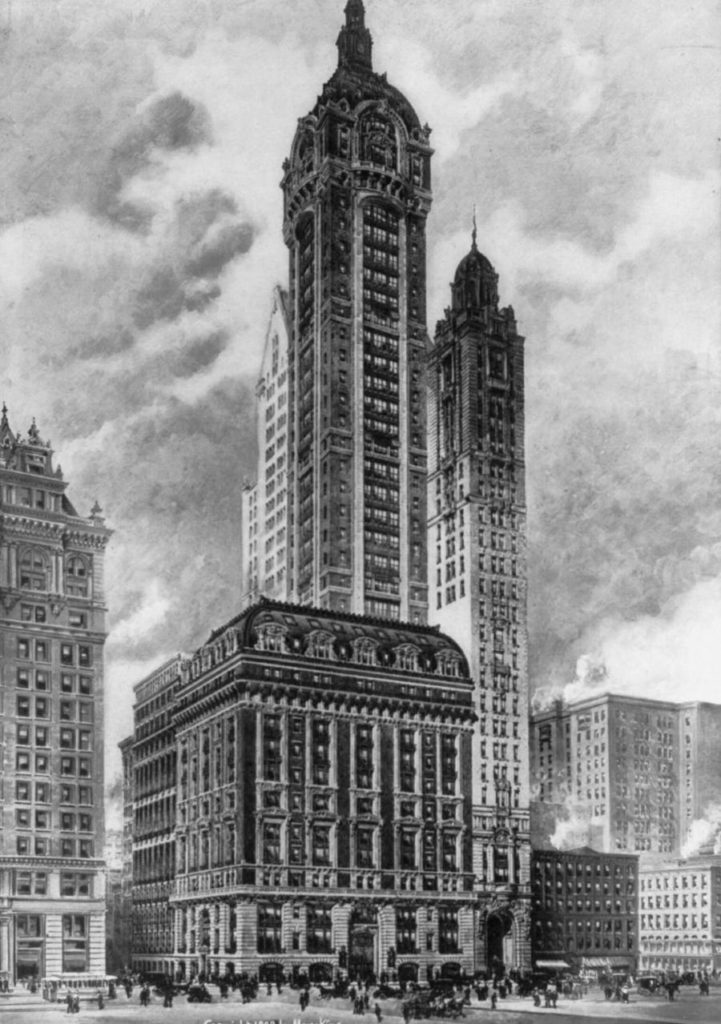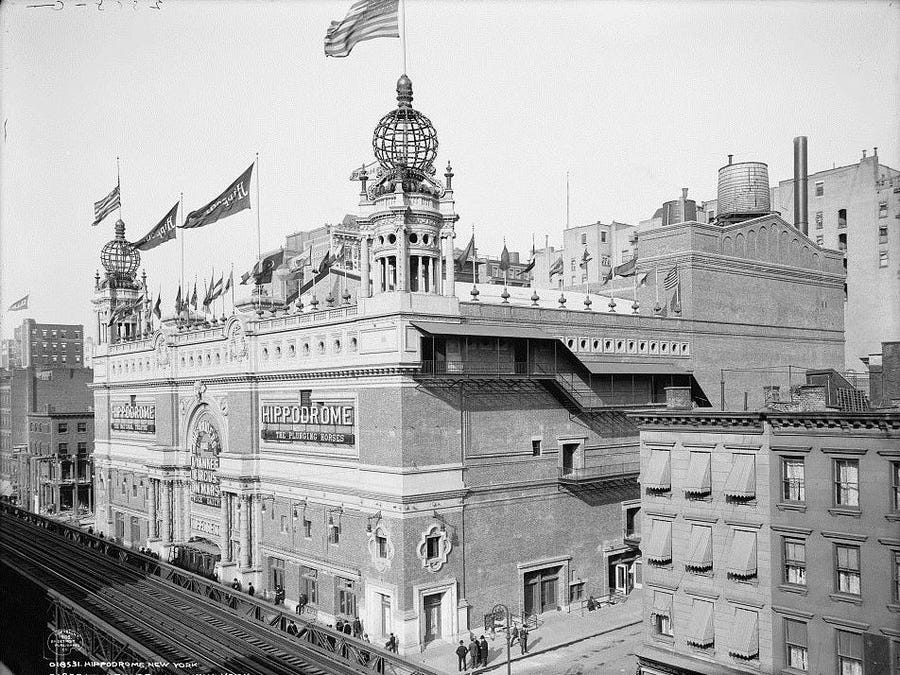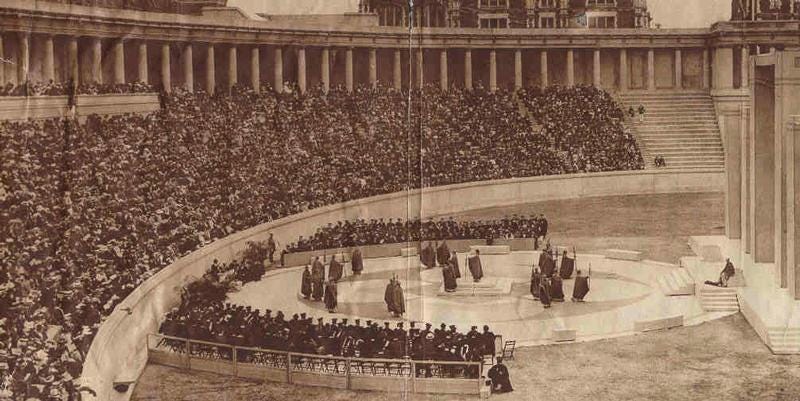1. Singer Building (1907-1968)
The Singer Building was completed in 1908 and served as a new headquarters for the Singer Sewing Machine Company. Constructed at Broadway and Liberty Street, the edifice was not only New York’s first skyscraper, but also the tallest building until 1909. The Singer Building was designed by Ernest Flagg, an architect of the Beaux-Arts School—an American Renaissance movement concerned with heavy ornamentation and classical style. Made up of a steel frame, red bricks, and limestone trim, the landmark structure had 47 stories and was 612 feet high. Until 2019, it was the tallest building to be demolished by human design. (Once 270 Park Avenue is fully demolished, it will be the sole holder of that title.)

2. New York Hippodrome Theater (1905-1939)
Home to circuses, spectacles, vaudeville performances, 500-member choruses, and plays, the Hippodrome Theater was another Beaux-Arts edifice. Modeled after the European hippodromes, the theater also reflected the Moorish Revival style via elements like its corner towers, each of which was topped by an electric-light-covered globe. Other parts like the capitals and entablatures were callbacks to ancient Rome. Complete with hydraulic elevators, 5,200-person-seating, and a water tank usable for both ice skating shows and swimming, the venue was perfect for staging Harry Houdini’s magic shows. In 1918, the illusionist had a 10,000 pound elephant named Jennie disappear from the brightly lit stage. Despite these fantastical acts, the crowd gradually waned as movies dethroned these forms of entertainment from their reign. During the stock market crash, the building’s developer forsook the site. The theater was finally demolished in 1939, when real estate values of the area soared.

3. Lewisohn Stadium (1915-1973)
As epic as the New York Hippodrome Theater was, the Lewisohn Stadium was even more so. With a capacity of 8,000, the semi-oval structure was located between 136th and 138th Streets and Amsterdam and Convent Avenues. Some of the notable productions staged at the stadium included The Trojan Women (1915) and Aida (1917), which suited the amphitheater’s Doric colonnade. The stadium’s namesake is the philanthropic Adolph Lewisohn, a German industrialist who funded its construction. A lover of operas and French Impressionism, Lewisohn was determined to make fine arts available to as many as possible. Thanks to his generosity, the ticket prices for summer symphonic concerts were often as cheap as 25 cents. The stadium was demolished to make room for the City College’s new $90-million academic center.

Conclusion
There are so many other old beautiful buildings that went away too soon. Notable mentions include the Samuel Osgood House, 52 Broadway, Savoy-Plaza Hotel. Whether to make room for other buildings, or to manage one’s finances, enlisting the right demolition service is key. Let Morgan Services Group know your demolition needs today!